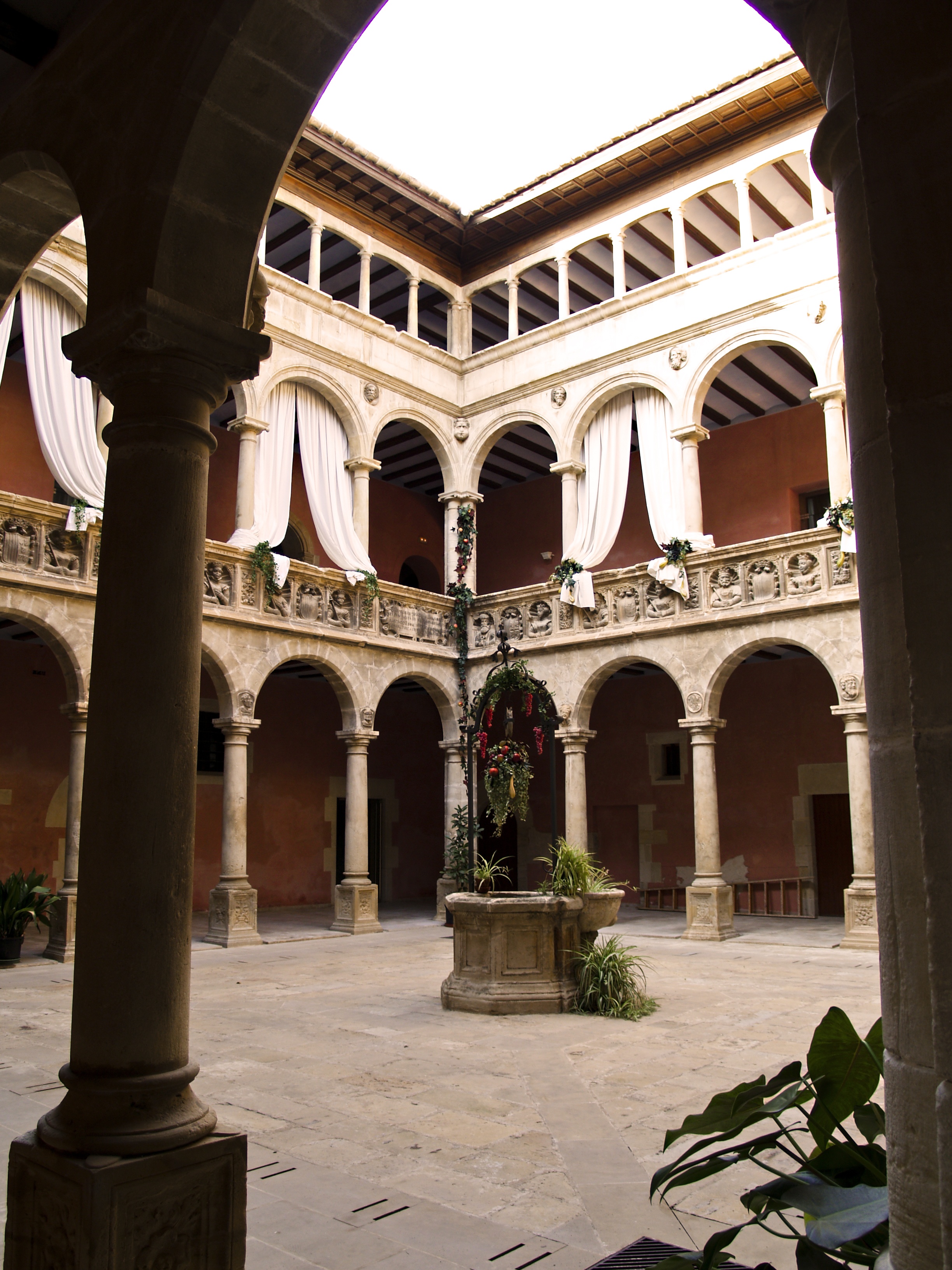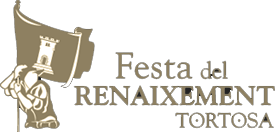LA FESTA
The splendour of a city
The Renaissance Festival is a seductive and magical journey back through time, which transports us to a glorious past, when Tortosa was one of the main cities of the Kingdom of Aragon. Porta del Principat, the only bridge crossing between the sea and Saragossa, its privileged situation caused it to become a prosperous and desirable locality. Capital of a vast territory, both at the administrative level, manifested in the Vegueria, and ecclesiastically –centre of a vast diocese that stretched as far as Almenara, 30 km from the city of Valencia—, it controlled the flow of the Ebro and its mouth, and all the freight traffic which inevitably had to pass through the municipality.

A compulsory stop on the way up from the south to Barcelona, kings and princes stayed there, and even a pope, Adrian of Utrecht, Bishop of Tortosa, on the way to Rome to receive the Tiara. These visits were celebrated with pomp, accompanied by numerous events to pay honour to such illustrious visitors, with the participation of the whole population, as described by Henry Cook, referring to the arrival of Felipe II in Tortosa in 1585:
[...] fue encontrado de catorce barcas, muy bien adresçadas de las confradías de Tortosa, que habian salido rio arriba con mucha presteza remando para saludallo. Estaba en la ribera el regimiento de la çiudad, no léxos de la puente donde pasa Ebro. Estaba en todas partes la gente extendida para recebir conmunmente con gozo á Su Majestad, el cual deseaban veer [...]. La música que había en las barquas excitaba á los villanos, arcabuceros y á los remeros á triunfo. Las pieças de artillería que estaban puestas por la çiudad, saludaban con tantos tiros á Su Majestad, que todos los pesçes que habia en Ebre se fueron á la mar y no osaron volver hasta que el Rey salió de Tortosa”.
[...] he was met by fourteen ships, very well crewed by the brotherhoods of Tortosa, which had rowed upstream in great haste to greet him. The regiment of the city was on the bank, not far from the bridge under which the Ebro flows. Crowds had gathered all over the place to joyfully welcome His Majesty, who they were eager to see [...]. The music from the ships excited the townsfolk and musketeers and drove the rowers towards victory. The units of artillery placed around the city, greeted His Majesty with so many shots that all the fish in the Ebro swam out to sea and did not dare return until the King had left Tortosa”.
Its geographical centrality turned the city into a local cultural centre that radiated towards the interior of its territory, introducing the new artistic and cultural developments of the time. Its equidistance from the three capitals of the Kingdom of Aragon, brought about this vitality. Links with Saragossa, Barcelona and Valencia were very intense: traffic of people, family ties, cultural exchanges and economic interests favoured the arrival of the latest literary and artistic trends, which, in turn, were disseminated to the hinterland of Tortosa. Moreover, the role in Catalonia and representativeness of the city is evident in the fact that during the sixteenth century, at least six presidents of the Generalitat de Catalunya (Government of Catalonia) were linked to the city, including Francesc Oliver de Boteller, member of an influential family of Tortosa and abbot of Poblet, promoter, among other reforms, of the current façade of the Palau de la Generalitat (Government of Catalonia Headquarter).

The city retains an important artistic legacy from the era, which includes the Royal Colleges, one of the most important examples of Renaissance architecture in Catalonia. Founded in 1544 by Charles V in order for the young Moors to be instructed in the Christian religion by the Dominicans, they form a complex made up of the College of St. James and St. Matthias, the Convent of Santo Domingo and the Church of Santo Domingo. The complex, built during the sixteenth century conforms faithfully to the Italian canons of the time, which makes it a rarity in the Catalan architecture of the time, still faithful to Gothic lines.
Other important artistic elements of the Renaissance are the city filing cabinet, built in 1574 by order of attorneys and which was in use until the last decade of the twentieth century. In the cathedral, meanwhile, there are the choir stalls, built by Cristóbal de Salamanca with Navarra oak, brought down the river in rafts, the Sacred Heart chapel, and the old altarpiece, commissioned by Bishop Gaspar de Punter and designed as a sculptural grille.
As a result of this intense human traffic from all over the kingdom, the city enjoyed a great literary vitality. But the most outstanding work of the period, both in Tortosa and in Catalonia, would not be published until the late nineteenth century. We are referring, of course, to the Col·loquis de la Insigne Ciutat de Tortosa, by the gentleman, Cristòfor Despuig. In the play, a gentleman, Lucio, and a merchant, Fabio, converse with Don Pedro, a Valencian knight on his way through Tortosa, on a variety of topics that range from the relationship of the Kingdom of Aragon with Castilla or the state of the Catalan language to local issues such as city governments or the description of the environment.
All this shows a city proud of its past, strong and firm in defending its privileges, with great social and cultural vitality. The Renaissance Festival relives the moment of splendour of a city in the sixteenth century.




